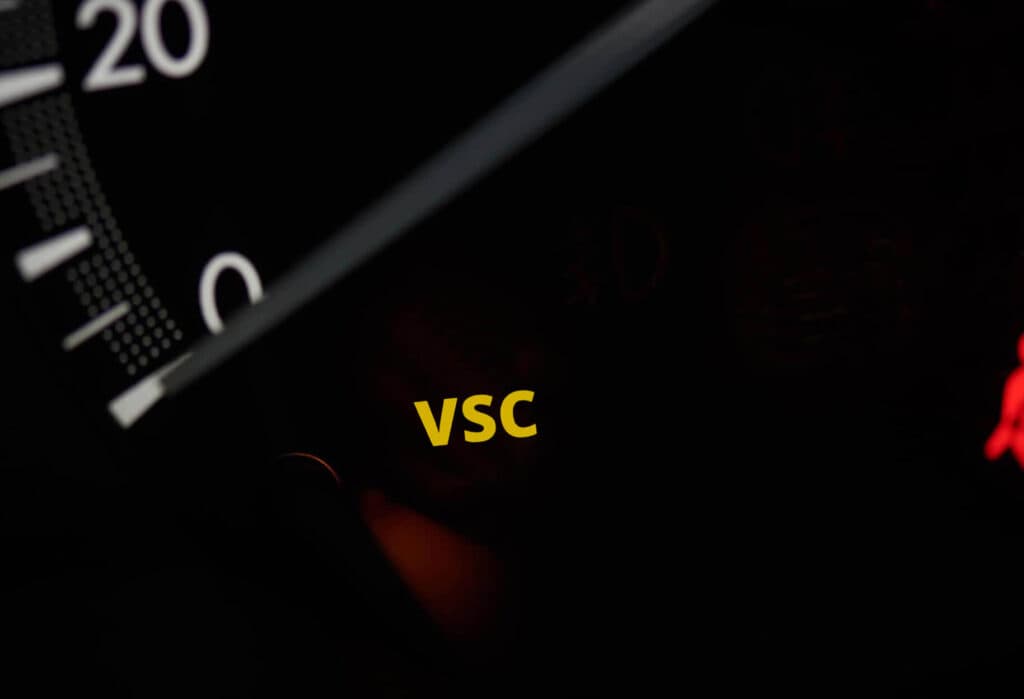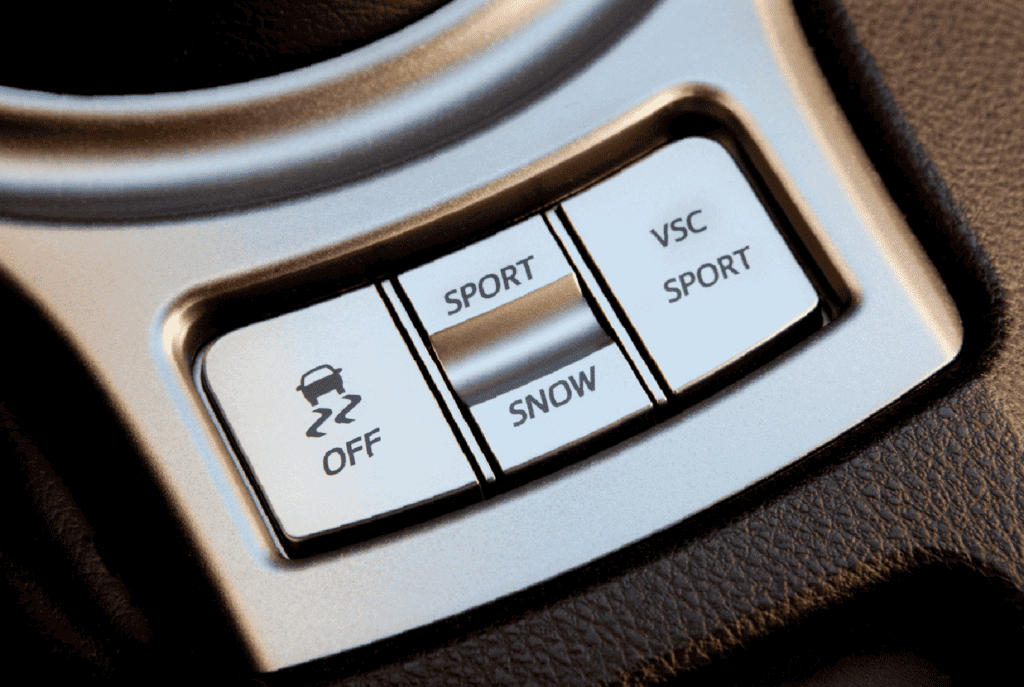The Traffic Lights of Your Dashboard
Imagine you’re cruising down the highway, and suddenly a new light flickers on your dashboard—the VSC light. If you’re like most drivers, you probably start questioning what this mysterious illumination could mean for your ride. Well, let’s set the record straight. That VSC light isn’t just another pretty display; it’s a warning system essential for your vehicle’s safety and stability.
Decoding VSC: What Does That Light on Your Dashboard Mean?
Picture your car’s VSC system as the unsung hero in an action movie, subtly influencing the events but never stealing the spotlight. When you’re swerving around curves or navigating slippery roads, it’s that system which subtly tweaks your steering and brake force to keep you stable. So when that VSC light illuminates on your dashboard, it’s as though this hero is finally stepping out from the shadows, either to warn you of imminent danger or to tell you it can’t perform its duties at the moment.

When the light flickers or stays on, it’s a mixed bag of messages. Sometimes, it’s the system’s way of saying, “Hey, I’m working hard here!”—usually when you’re navigating through conditions that test your vehicle’s stability, like icy roads or steep hills. It’s the car’s way of communicating that the VSC system is actively engaged, making those minute adjustments to your vehicle’s mechanics to help you maintain control.
On the flip side, the VSC light can also be a red flag, no less alarming than a smoke detector going off in the middle of the night. It could signify a sensor malfunction or even a system failure, indicating that your backup dancer in this intricate ballet of driving isn’t going to catch you if you stumble. Either way, the VSC light is not to be ignored. Think of it as the “swipe right” in your relationship with your car: it signals that something significant is happening, and you should pay attention. Whether it’s a momentary activation due to road conditions or a persistent warning of system failure, understanding what that light means can be the difference between a smooth ride and a potentially dangerous situation.
The Triggers: What Makes the VSC Light Come On?
Several factors could prompt that pesky VSC light to grace your dashboard:
• Sensor Malfunctions: The most common reason for the VSC light to come on is a faulty sensor. These sensors monitor variables like wheel speed and steering angle to operate the VSC system.
• Slippery Roads: Wet, icy, or muddy conditions can activate the VSC system, turning on the light to let you know that it’s helping you maintain control.
• Abrupt Maneuvers: Making a sharp turn or swerving might activate the VSC system, indicating that it’s working to stabilize the vehicle.
• Steep Inclines or Declines: Driving up a steep hill or down a significant slope can trigger the VSC light, signaling that the system is engaged.
• Heavy Load: If you’re carrying a load that’s unusually heavy, the added weight might disrupt the vehicle’s stability, prompting the VSC to activate.
• Tire Pressure: In some cases, uneven or drastically low tire pressure can also trigger the VSC system.
Navigating with a Lit VSC: Safe or Risky?
Imagine being on a tightrope but without the safety net below. That’s somewhat akin to driving with a VSC light that won’t turn off. Sure, you can continue driving for a short while, perhaps to the nearest service station or until you reach your destination. But let’s dissect the risk factor here. The VSC light is your vehicle’s way of saying, “Hey, I might not be able to hold us steady if things go sideways (literally).” So, every sharp curve you take, every slippery road you navigate, you’re doing so without your car’s advanced stability system in play.
What could happen? Well, in an ideal scenario, nothing. You might reach your destination with no tales to tell. But, automotive issues are like a box of chocolates; you never really know what you’re going to get. You could lose control on a sharp bend or skid in wet conditions, scenarios where VSC would have normally kicked in to stabilize the vehicle. Therefore, while not an immediate cause for alarm, a lit VSC light should be treated as a priority to avoid any serious mishaps down the road.
Control Hub: Locating and Identifying the VSC Button
Now, about that elusive VSC button. If you’re picturing something right out of a spaceship’s control panel, you’re in for a bit of disappointment. More often than not, the VSC button is pretty nondescript but serves an essential function. Its location is not universal; think of it as your vehicle’s Easter egg. In most cars, you might find it on the dashboard, perhaps snuggled beside the fog light switch or the button that pops the trunk. In other models, you may find it closer to the gear shift, not wanting to be too far from the action.
The button usually carries the “VSC” label, making it a no-brainer to identify. If it’s not explicitly labeled, you might see an icon featuring a car with some curvy lines trailing behind it—this universally symbolizes vehicle stability. So, the next time you’re puzzled about where that VSC button is hiding, a quick glance at your dashboard or around your gear shift should solve the mystery. And yes, it’s a good idea to know where it’s located before you actually need to use it, just like you’d want to know where the fire extinguisher is before your kitchen turns into a five-alarm situation.
Resetting Routines: How to Turn That Light Off
1. Consult the Owner’s Manual: The first step in resetting the VSC light is to consult your car’s owner’s manual. This manual often contains specific instructions tailored to your vehicle make and model.
2. Park and Turn Off the Engine: Safely park your vehicle in a flat area and turn off the engine. Allow it to sit for a few minutes to ensure all systems are at rest.
3. Turn the Ignition to “On”: Without starting the engine, turn your ignition key to the “On” position. This powers up your vehicle’s electronics, including the dashboard lights.
4. Press and Hold the VSC Button: Locate the VSC button and press and hold it down for a few seconds.
5. Check Dashboard Lights: While holding the VSC button, look at your dashboard. The VSC light should blink, indicating that you are in the process of resetting it.
6. Turn the Ignition to “Off”: After the blinking stops, turn the ignition back to the “Off” position.
7. Restart the Vehicle: Start the car like you normally would. The VSC light should be off now. If it comes back, this is a sign that professional help is needed.

Potential Repairs and Costs: The Dollar Side of Dashboard Lights
Prepare your wallet; resolving VSC light issues may come with a price tag.
• Sensor Replacement: The VSC sensors might be malfunctioning. Replacing these could cost you anywhere from $200 to $300.
• Control Module Repair: The control module orchestrates the VSC system. A malfunction here could be serious and cost upwards of $800.
• Wheel Alignment: Sometimes the issue could be as simple as a wheel alignment problem, usually costing around $75 to $200.
• Brake System Inspection: In some cases, brake system components might interfere with the VSC system, requiring replacements or repairs that could range between $150 and $500.
• Labor Costs: Remember that labor costs for diagnostics and repairs could add an additional $100 to $200 to your bill.
It’s a gamble between smaller upfront costs and hefty expenses down the road if you choose to ignore the issue.
Mastering the VSC Light and Embracing Safe Drives
Your vehicle’s VSC system is not just another acronym to add to the motoring alphabet soup—it’s a key player in your road safety arsenal. Understanding what triggers it and how to deal with it equips you for a safer, smoother driving experience. If that VSC light has been bugging you and you’re not sure what to do next, consider reaching out to Uchanics, a trusted mobile mechanic service in Canada, for professional assistance tailored to your needs.
